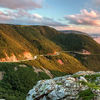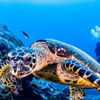Our tips for your health on board
Drink plenty of water during the flight
The lower humidity in the aircraft has a dehydrating effect on our bodies. That is why we tend to feel thirstier when flying. Make sure you hydrate as much as possible before your flight, so as to balance a liquid deficiency. Still water is your best option as carbonated beverages can cause flatulence. Fruit juices are also highly recommended. Avoid anything that has a dehydrating effect on your body, such as alcohol, coffee or black tea.
Not too much alcohol on board
As well as having a dehydrating effect on our bodies, alcohol also makes people more unpredictable. Inebriated passengers are often unpleasant for the other passengers and for the Cabin Crew. Behaviour influenced by alcohol also has negative effects on flight safety. Passengers who disregard the instructions of the Crew are in violation of aviation law; a disruption of order can result in fines and/or even prison sentences imposed by the legislator. If an inebriated passenger puts flight safety at risk, the flight captain is authorised to order an intermediate landing. The police will be waiting at the respective airport and will accompany the passenger concerned off the aircraft. The costs arising from such escapades shall be borne by the inebriated passengers. To prevent such situations from occurring, you are not permitted to consume any alcoholic beverages brought on board with you (this also applies to purchases made at the duty-free shop). We appreciate and thank you for your collaboration.
Eat enough on board
The culinary well-being of our passengers is very important to us. Whether on short- or long-haul flights, we are proud to serve you seasonal menus and specialities. If you suffer from a food allergy, have special dietary requirements or wish to forgo certain food products, we have a choice of special menus for you. You can book your preferences when booking your flight, or subsequently up to four days before departure.
Allergies
We take passengers with food allergies into consideration. For production reasons, however, it is not possible to offer dishes without any traces of peanuts. The menus and snacks on board may contain nuts or peanut-based ingredients. We recommend that people with severe allergies consider possible reactions and have their own emergency medicine with them. If necessary, you can also bring your own food, which does not need to be cooled or reheated on board. If in doubt, the person concerned must clarify their condition with their doctor in advance.
Click on the following link to see our special menus:
Coping with jet lag
Our biological clock ticks to the rhythm of nature. Sunrise and sunset define which hormones our bodies produce, and whether we feel like sleeping or eating. Passengers travelling east- west or west-east across more than five zones will need a few days to acclimate to the new time zone; this is referred to as jet lag. The regulatory mechanism for temperature changes, cardiac activity, appetite and sleep is in keeping with the time zone of the place of departure and will need time to adjust to the new location. This can lead a few days of discomfort before becoming fully adjusted to the new time zone.
How to prevent travel thromboses
Air travel involves being seated for extended periods, with very limited movement. This is not something our legs favour – especially on long flights when passengers are immobile for many hours. The lack of movement can increase the risk of thrombus formation. A thrombosis is a leg vein blockage caused by a blood clot. In serious cases, clots can break off and travel through the body to the heart. Because the arteries flowing away from the heart become slightly narrower, the blood clot can get stuck in an artery. The lung tissue is no longer supplied with sufficient fresh blood, causing a pulmonary embolism. Make sure to do some leg exercises, and keep your feet and legs moving. Movement will ensure good blood circulation and keep the risk of developing a blood clot to a minimum. This is how you can prevent heavy legs and the risk of thrombosis.








